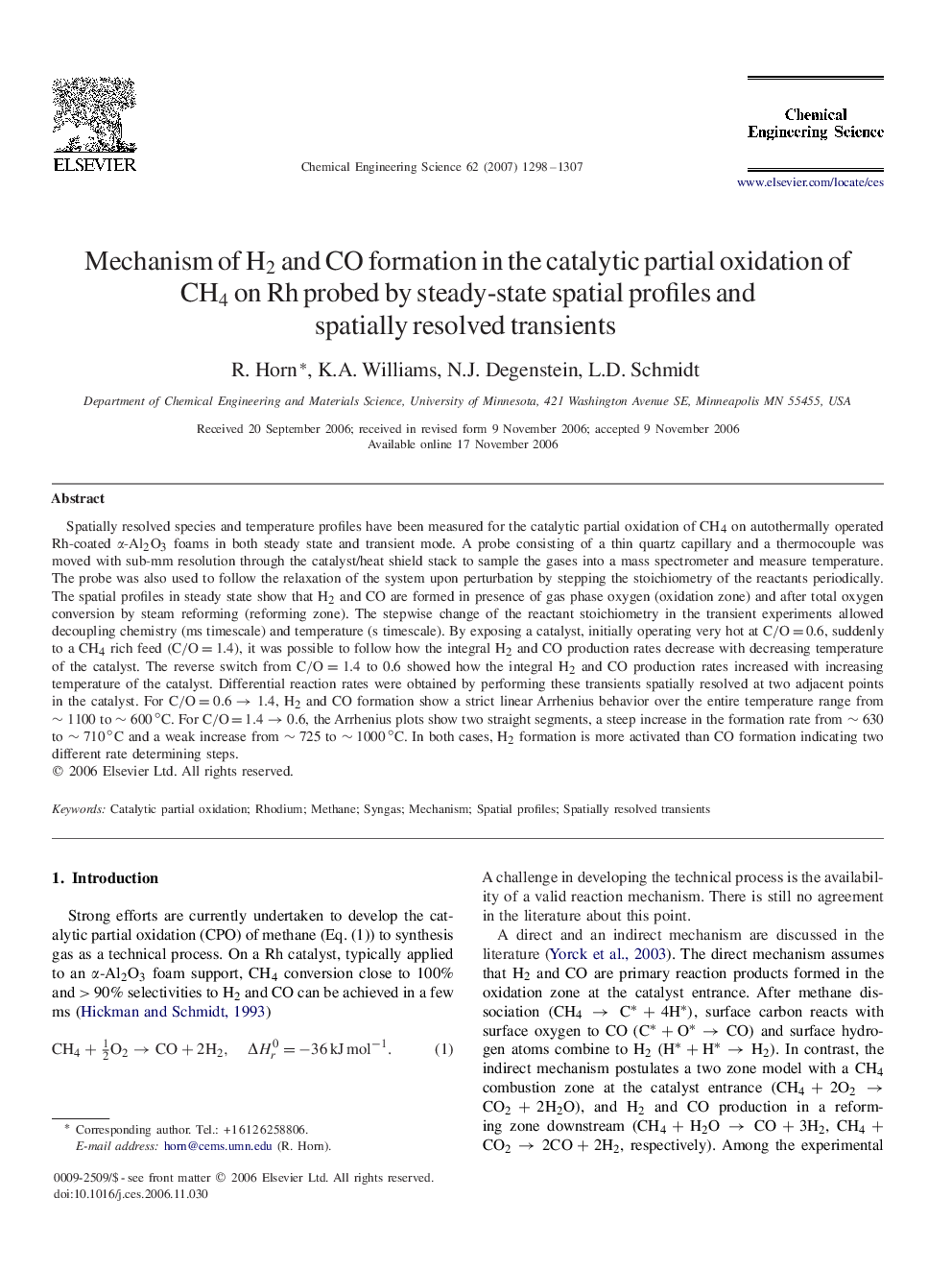| کد مقاله | کد نشریه | سال انتشار | مقاله انگلیسی | نسخه تمام متن |
|---|---|---|---|---|
| 158406 | 457007 | 2007 | 10 صفحه PDF | دانلود رایگان |

Spatially resolved species and temperature profiles have been measured for the catalytic partial oxidation of CH4CH4 on autothermally operated Rh-coated α-Al2O3α-Al2O3 foams in both steady state and transient mode. A probe consisting of a thin quartz capillary and a thermocouple was moved with sub-mm resolution through the catalyst/heat shield stack to sample the gases into a mass spectrometer and measure temperature. The probe was also used to follow the relaxation of the system upon perturbation by stepping the stoichiometry of the reactants periodically. The spatial profiles in steady state show that H2H2 and CO are formed in presence of gas phase oxygen (oxidation zone) and after total oxygen conversion by steam reforming (reforming zone). The stepwise change of the reactant stoichiometry in the transient experiments allowed decoupling chemistry (ms timescale) and temperature (s timescale). By exposing a catalyst, initially operating very hot at C/O=0.6C/O=0.6, suddenly to a CH4CH4 rich feed (C/O=1.4)(C/O=1.4), it was possible to follow how the integral H2H2 and CO production rates decrease with decreasing temperature of the catalyst. The reverse switch from C/O=1.4C/O=1.4 to 0.6 showed how the integral H2H2 and CO production rates increased with increasing temperature of the catalyst. Differential reaction rates were obtained by performing these transients spatially resolved at two adjacent points in the catalyst. For C/O=0.6→1.4C/O=0.6→1.4, H2H2 and CO formation show a strict linear Arrhenius behavior over the entire temperature range from ∼1100∼1100 to ∼600∘C. For C/O=1.4→0.6C/O=1.4→0.6, the Arrhenius plots show two straight segments, a steep increase in the formation rate from ∼630∼630 to ∼710∘C and a weak increase from ∼725∼725 to ∼1000∘C. In both cases, H2H2 formation is more activated than CO formation indicating two different rate determining steps.
Journal: Chemical Engineering Science - Volume 62, Issue 5, March 2007, Pages 1298–1307